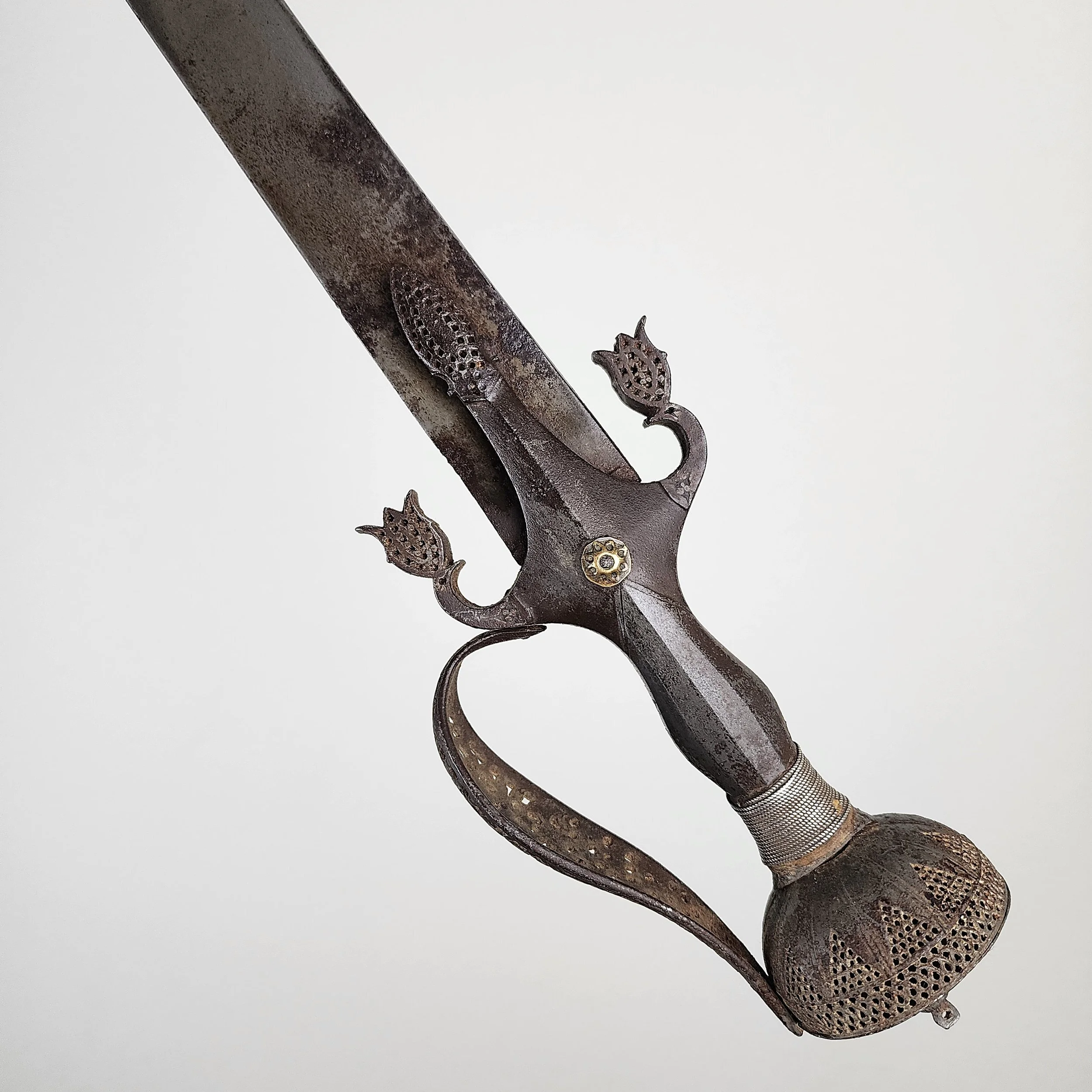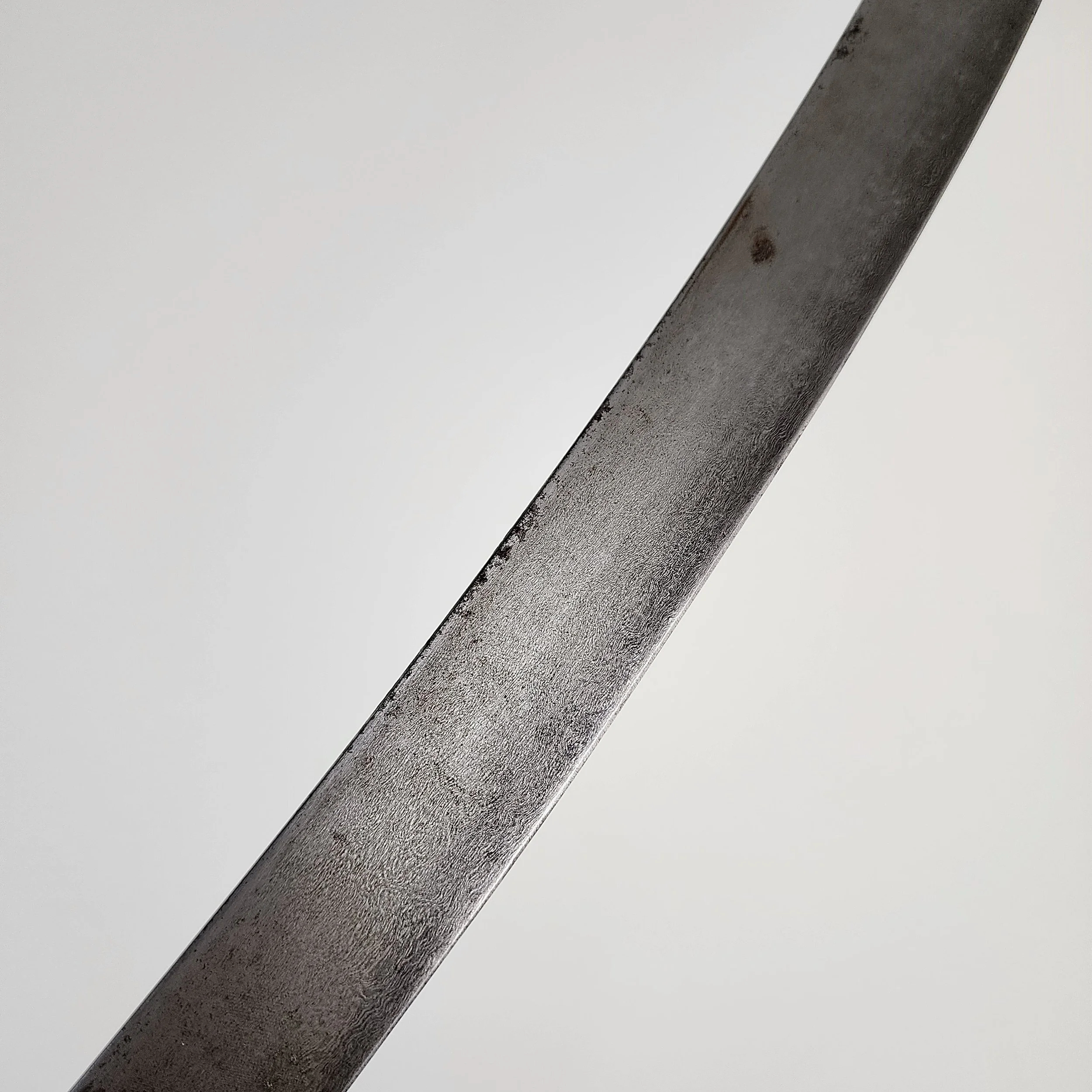Pulouar (Pulwar)
Pulouar (Pulwar)
Safavid - Afsharid Dynasty, Persia (Iran) - Durrani Empire (Afghanistan)
Blade & Sheath: First half 18th century, Hilt: Early 19th century
Damask steel, gold, iron, brass, wood, leather, stone
Blade: 79,1cm
Hilt & Blade: 90,5cm
Hilt, Blade, Sheath: 100,3cm
Collection Date: 2020
Collection Number: 144
Ex. Thomas Del Mar LTD/ Olympia Arms: London, UK (2020)
This very fine pulouar sword originates from Afghanistan during the reign of the Durrani Empire, incorporating an 18th- century fine Persian Damask blade and sheath.
Persian blade first half 18th century, in the traditional shamshir form (tigheye: shamshir blade), strongly curved, single- edged, and unfullered. It is entirely composed of tightly grained kara taban Damask mottled pattern wootz (jawhar-e tigh: pattern) showing silvered dendrites against the darker contrast background. On one side, traces of two gold calligrapic cartouche panels with remnants of "amal-e (work of)...possibly with the name of (Esfahani (Isfahan, Iran) Assadullah). Along the blade's edge in gold is a flower and a strip of unidentified cursive inscriptions now almost indistinguishable. Also, remnants of gold can be seen under the langlet, but again, it is difficult to decipher.
The hilt is Afghan origin, early 19th century, with a pierced langlet, and drooping quillions in the shape of blossoming lotus flowers. A brass rivet stud mounts the hilt to the blade in the center with bound silver wire at the base. The broad knuckle guard pierced with Koranic calligraphy inscription of Sura 61, verse 13 ('Nasrum Minallaahi Fathun Qareeb'), "Victory from Allah and conquest is near." The domed pommel is also pierced, holding six medium- sized stones that rattle when in motion.
Wooden sheath (ghalaf: scabbard) covered in a leather (shagri: leather) decorated in relief work with finely chiseled (ghalazani: steel chiseling) iron suspension rings (varbands: suspension rings) set in traditional foiliage background (gol va bote) inhabited by herons and doves. Leather mouth (later replacment) where the sheath was probably damaged in its lifetime. Ending in an iron chape (tah-e ghalaf: chape) with bound silver wire.
A very fine sword mounted with an old blade. The blade does have some pitting, particularly at the base near the hilt. Minor rust and loss to gold on blade. The sword was cleaned and oiled when received, removing the old debris from within the pierced holes that were plugged. Although with minor condition issues, it remains a very fine example of the pulouar sword. Regarding the blade, Assadullah of Isfahan is the renowned Persian artisan shamshir swordsmith in the 17th century. Artisans continued to use the name to copy his prestige to blades until the 19th century Qajar period. The name is now thought to be an honorary title signifying the highest mastery of sword making, hence the highest title to an Iranian smith according to Manouchehr.
[1] Manouchehr, Moshtagh Khorasani. 2006. “Arms and Armor from Iran”. Pg. 427 Cat. 69 (Varbands), Pg. 431 Cat. 72 (Blade), Pg. 467 Cat. 99 (Varbands)
[2] https://www.metmuseum.org/art/collection/search/31121














